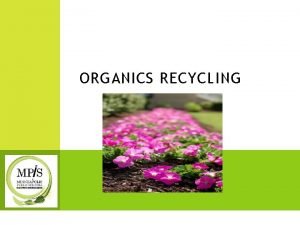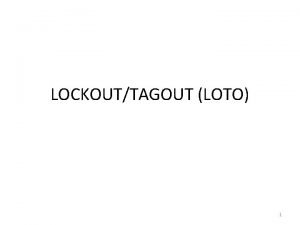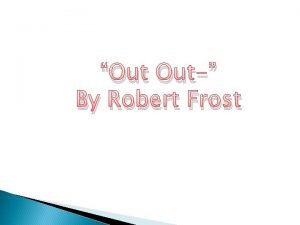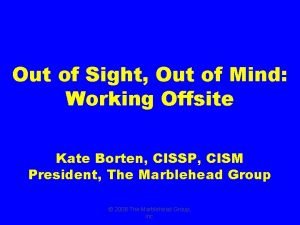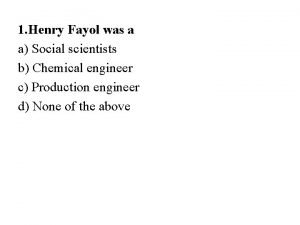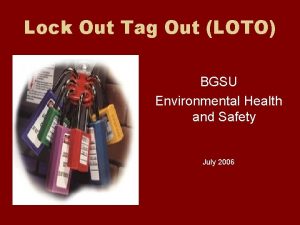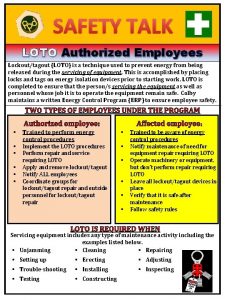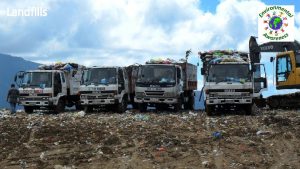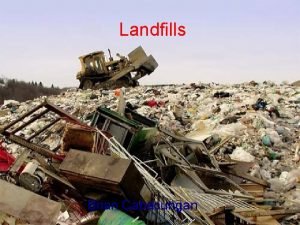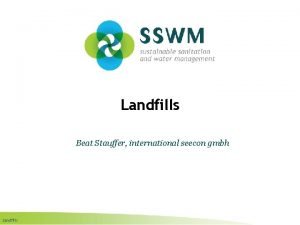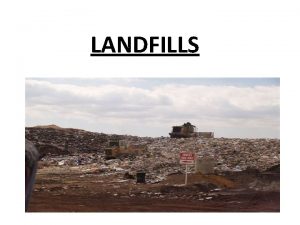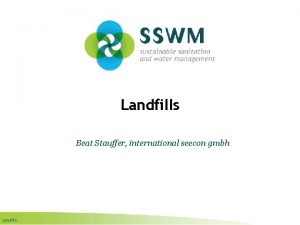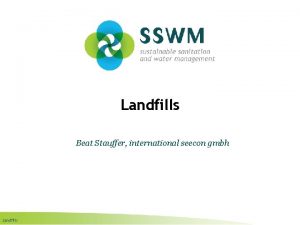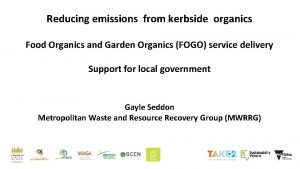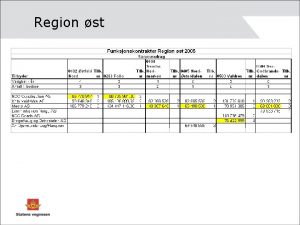Organics Out of Landfills in a Rural Region
















- Slides: 16

Organics Out of Landfills in a Rural Region GRRN National Recycling & Zero Waste Conference October 2009 Central Vermont Solid Waste Management District

Helping Our Cities and Towns to Work Toward Zero Waste. “The CVSWMD will make the diversion of organic matter from waste the single most important program activity undertaken in the next five years (2003 – 2008. )” Quote from Working Towards a Zero Waste Region, the Central Vermont Solid Waste Implementation Plan, adopted April 7, 2003

Specific Commitments n Understand options for organics diversion n Emphasize sustainable programming and business endeavors n Pilot more organics programs than any other initiative n Adopt legislation, policies and practices that spur organics diversion

Program Goals n Offer all residents, restaurants, cafeterias and groceries within the District organics diversion n Create opportunity for 100% of K-12 schools in District to divert food scraps to composting (30 schools/9, 600 students) n Establish sustainable routing (>20 mins. drive time) to facility n Assist start-up of multiple receiving facilities

Rural Challenges n Distance between generators and low quantities = high cost for collection n Dirt roads, geography, NE weather prevent collection in certain areas or times of year n On-site residential options can attract nuisance and dangerous wildlife n Quantities can overwhelm on-farm partners n Generation rates may vary by season – camps, ski areas, schools

Rural Solutions n Multiple facilities sized to handle a specific route n On-site solutions for small generators – in- vessel and Green Cone digesters n Equipment impervious to foraging animals n Offer payments to “hold capacity” during off- seasons

Residential Program n Residential curbside collection of organics was deemed costly, polluting and inconsistent with Zero Waste goals. n District opted to create the “Bin & Cone” program n Compost bins where desired n Green Cone food scrap digesters for all single family, owner occupied residences

Bin & Cone Program n Composting can co-exist n Addition of Green Cone allows diversion of meat, bones, cheese/dairy and grease Green Cones pay for n Can implement at single themselves in family and multi-family avoided disposal costs in less than a owner-occupied year for the average residences, small schools household in and businesses Vermont

Commercial & Institutional Programs n Divert kitchen scraps and post-consumer food “waste” n Available to restaurants, cafeterias, and schools in Central Vermont Cost of collection is dependent upon generator size, and range from $110 $135 per ton; landfill costs range from $110– 150 per ton in Vermont n Produces a contaminant- free resource

Making Collection Possible When private haulers could not be enticed to develop collection routes, the CVSWMD invested in a small fleet to collect organics.

How It Works Totes are used for food scrap collection (avg. weight 220 lbs. ) n n Scraped directly into totes or 5 gallon pails and carried to totes

Kitchen Staff Training n Logistics worked out with key contact at business n Kitchen staff training n Manual, video training disc, and contact info sheet provided n Laminated wall posters for “food scrap stations” as reminders for what is acceptable and not

Zero Tolerance Feedback Loops Contaminant-free material reduces problems, increases value of material, and results in dramatic decrease in cost to construct a food-scrap to energy digester. n Drivers inspect top 6 -8” prior to collection n Small problems are reported to establishment within 24 hours n Excess and repeat contamination results in refused tote/load

Green Marketing The Benefits to Businesses and Schools are clear n First month for businesses or year for schools is FREE! n Marketing materials – table-talkers, news and radio ads, window decals n Diversion saves money over disposal

Accomplishments 2005 Governor’s Award for Environmental Excellence & Pollution Prevention Over 3, 000 tons of food scraps diverted to date 100% of all schools in District involved New compost facility sited Nearly 4% of households use Green Cones Farm takes over rural route, sells compost $492, 000 DOE grant to research feasibility of food scrap to energy biodigester project

Helping Our Cities and Towns to Work Toward Zero Waste. Donna Barlow Casey Director@cvswmd. org www. cvswmd. org
 Midwest organics recycling
Midwest organics recycling Metaphor in one thing one direction
Metaphor in one thing one direction Teres major origin and insertion
Teres major origin and insertion Active region and saturation region
Active region and saturation region Lock ouy
Lock ouy Out out by robert frost
Out out by robert frost Poem out out by robert frost
Poem out out by robert frost Out, damned spot! out, i say!
Out, damned spot! out, i say! Outta sight outta mind quotes
Outta sight outta mind quotes Out of sight out of time
Out of sight out of time Makna out of sight out of mind
Makna out of sight out of mind Henri fayol was a social scientist
Henri fayol was a social scientist Out out analysis
Out out analysis Matthew 11 msg
Matthew 11 msg Put out the light, and then put out the light
Put out the light, and then put out the light Log out tag out deutsch
Log out tag out deutsch Loto safety talk
Loto safety talk
